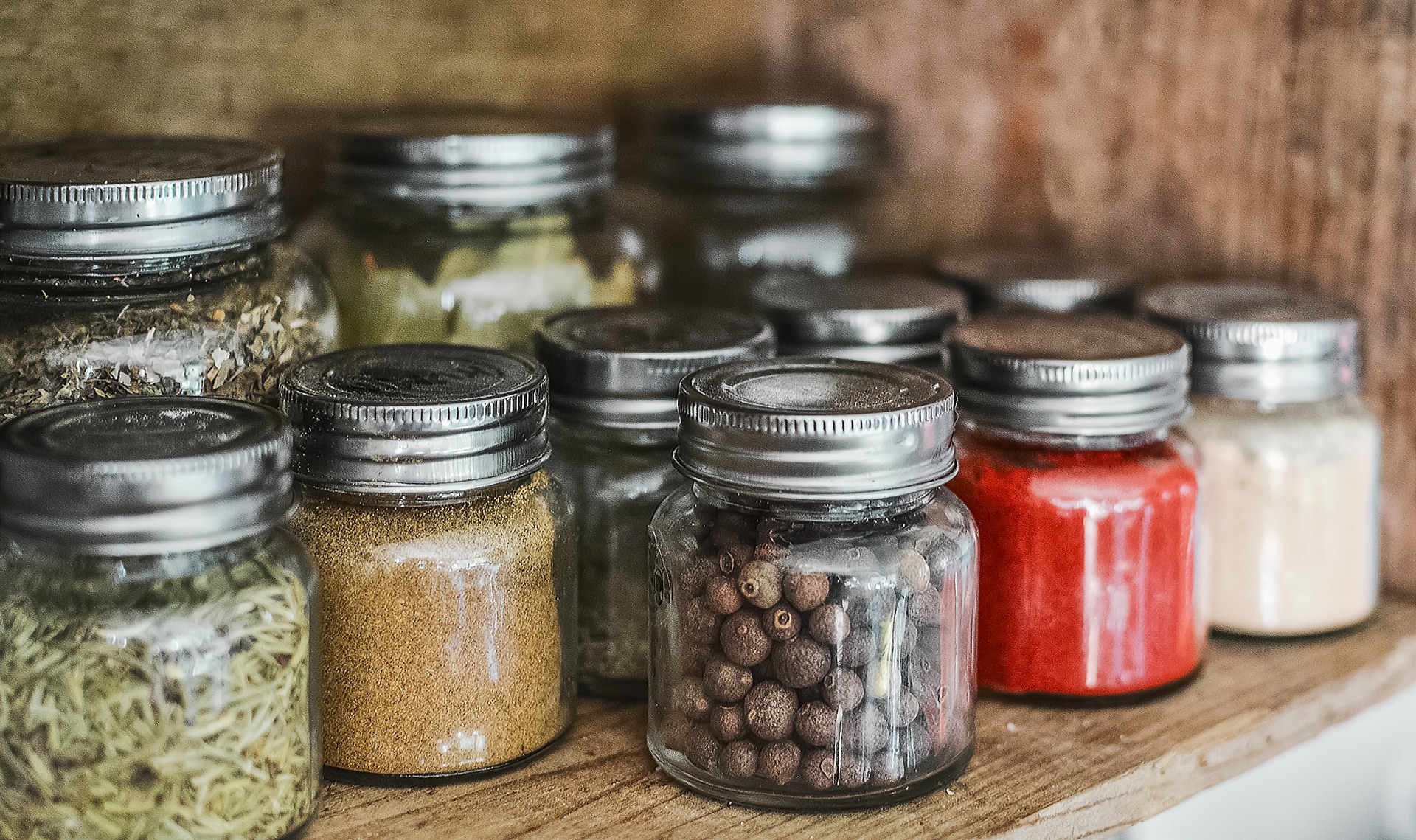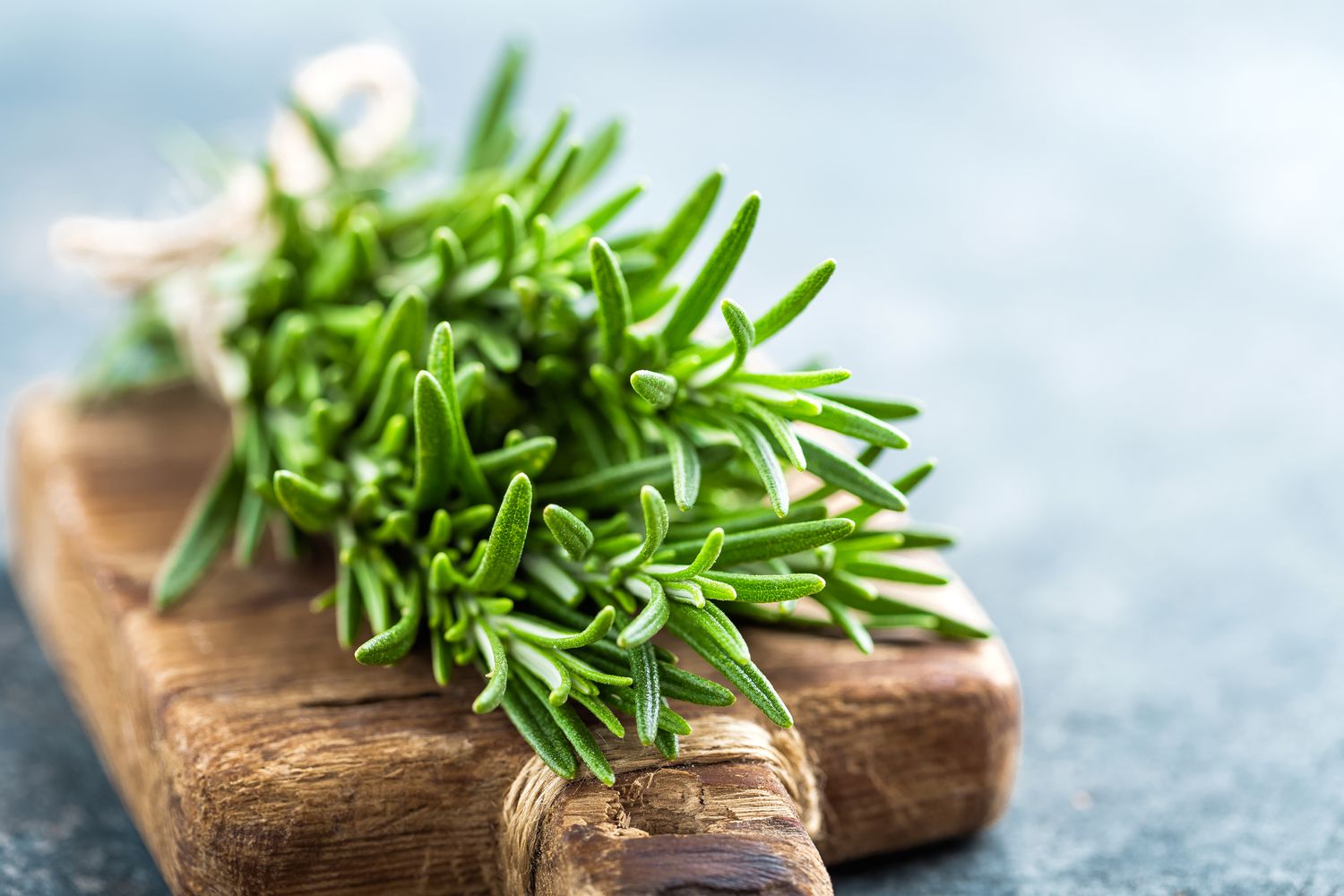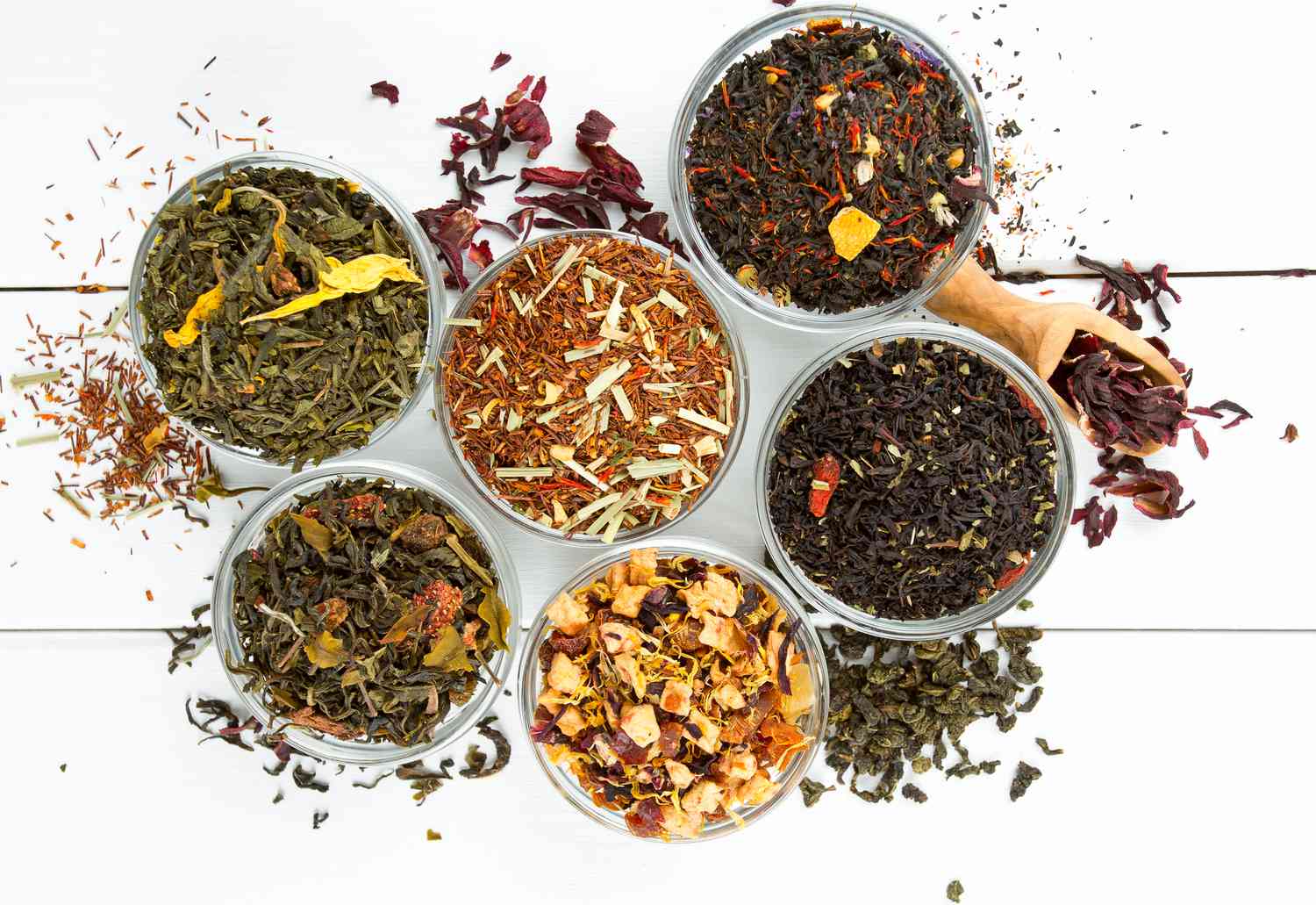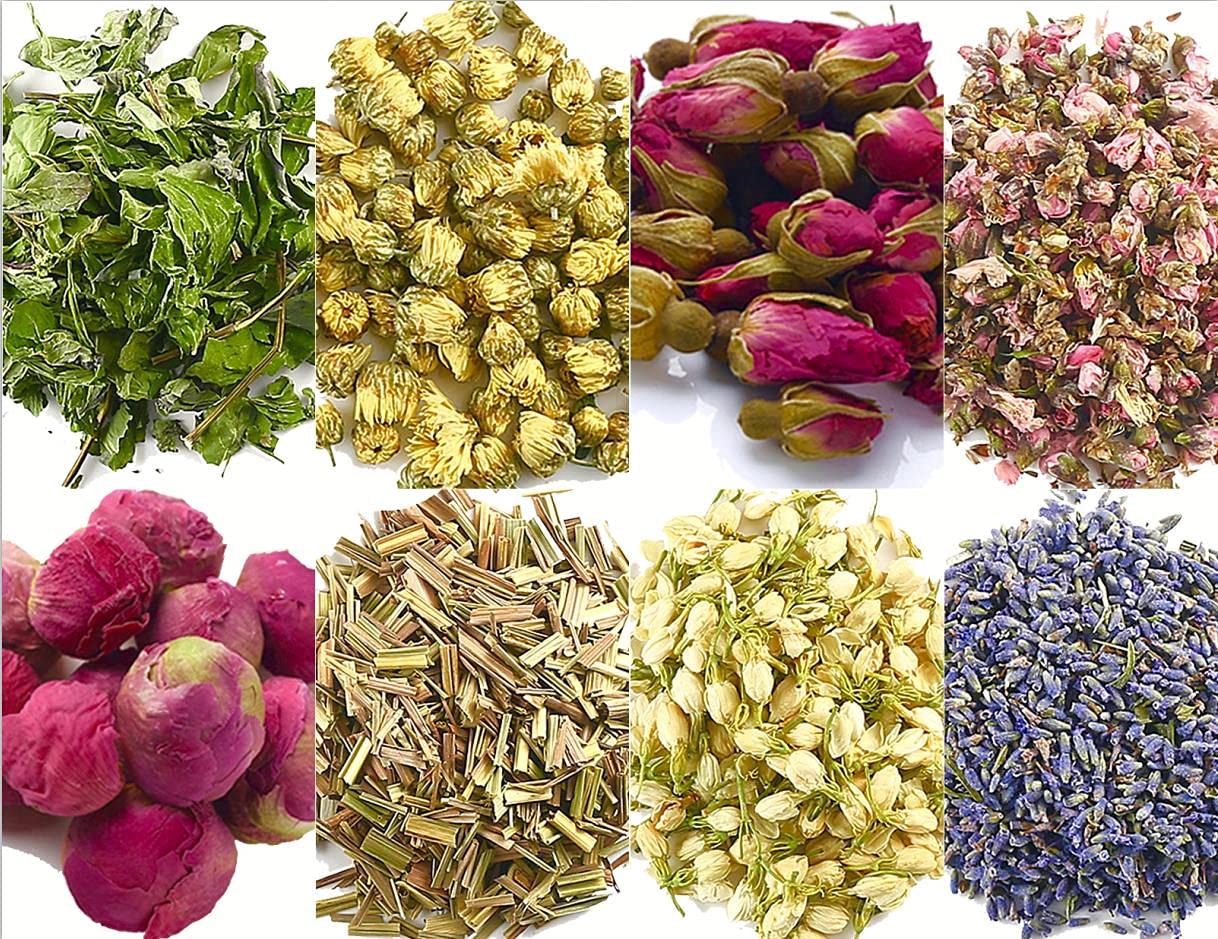Home>Gardening News and Trends>Latest News>How To Freeze Dry Herbs


Latest News
How To Freeze Dry Herbs
Modified: January 22, 2024
Learn the latest news on how to freeze dry herbs and preserve their flavors for longer. Discover expert tips and techniques for successful herb preservation.
(Many of the links in this article redirect to a specific reviewed product. Your purchase of these products through affiliate links helps to generate commission for Chicagolandgardening.com, at no extra cost. Learn more)
Table of Contents
Introduction
Welcome to the world of freeze-drying! If you’re looking to preserve the freshness and flavor of your favorite herbs, freeze-drying is a game-changer. This innovative method allows you to extend the shelf life of herbs while retaining their vibrant colors, delicate aromas, and potent flavors.
But what exactly is freeze-drying, and why should you consider using this technique for your herbs? In this article, we will explore the ins and outs of freeze-drying herbs, its benefits, and provide you with a step-by-step guide on how to freeze-dry herbs at home.
Freeze-drying, also known as lyophilization, is a process that involves removing moisture from a substance, such as herbs, by freezing it and then evaporating the ice crystals without transitioning into a liquid state. This method preserves the herbs’ natural qualities by avoiding the damaging effects of heat and excessive moisture.
So, why should you choose freeze-drying over other preservation methods like drying or freezing? Freeze-drying offers several key advantages that make it the preferred choice for preserving herbs:
- Retention of Nutritional Value: Unlike traditional drying methods, freeze-drying helps retain the nutritional content of the herbs. This means you can still enjoy the health benefits of vitamins, minerals, and antioxidants that are often lost during other preservation processes.
- Prolonged Shelf Life: Properly freeze-dried herbs can have a significantly longer shelf life compared to other preservation techniques. The absence of moisture prevents the growth of bacteria, mold, and other microorganisms that can lead to spoilage.
- Preserved Flavor and Aroma: Freeze-drying preserves the natural flavors and aromatic compounds of herbs. When rehydrated, the herbs regain their original taste and aroma, allowing you to enjoy the true essence of fresh herbs even after months or even years of storage.
- Convenience and Versatility: Freeze-dried herbs are lightweight, compact, and easy to store. They take up less space than fresh or dried herbs, making them ideal for those with limited storage areas. Additionally, freeze-dried herbs can be easily reconstituted by adding water, allowing for effortless use in your favorite recipes.
Now that we’ve explored the benefits of freeze-drying herbs let’s dive into the step-by-step guide on how to freeze-dry herbs at home.
What is Freeze Drying?
Freeze drying, also known as lyophilization, is a process that involves removing moisture from a substance by freezing it and then evaporating the ice crystals without transitioning into a liquid state. This preservation technique is widely used in various industries, including food, pharmaceuticals, and cosmetics.
The freeze-drying process consists of three main stages: freezing, primary drying, and secondary drying. During the freezing stage, the herbs are placed in a freezer or specialized freeze-drying machine and cooled to extremely low temperatures. This freezing step solidifies the water present in the herbs into ice crystals.
In the primary drying stage, the frozen herbs are subjected to a vacuum, and a process called sublimation occurs. Sublimation is the direct conversion of solid ice into water vapor, bypassing the liquid state. By applying low pressure and gentle heat, the ice crystals in the herbs transform into vapor and exit the product.
After primary drying, the herbs enter the secondary drying stage. In this phase, any remaining water molecules are removed from the herbs. This is achieved by increasing the temperature slightly and maintaining a low-pressure environment. The secondary drying stage ensures that all moisture is eliminated, maximizing the shelf life and stability of the freeze-dried herbs.
The freeze-drying process is meticulously controlled to ensure the preservation of the herbs’ quality. By removing moisture without the use of heat, freeze-drying minimizes damage to the herbs’ cellular structure, preserving their taste, aroma, color, and nutritional properties.
Freeze-dried herbs are characterized by their light and airy texture. Once freeze-dried, the herbs become brittle and can easily crumble into small pieces. This texture is advantageous for various uses, such as grinding the herbs into powder or rehydrating them for culinary purposes.
Due to its effectiveness in preserving the natural qualities of herbs, freeze-drying has become the preferred method for preserving herbs in the food industry. It allows for long-term storage without compromising the herbs’ flavors, colors, or nutritional value.
Now that we have a solid understanding of what freeze-drying is, let’s explore the benefits it offers for preserving herbs in more detail.
Benefits of Freeze Drying Herbs
Freeze drying herbs offers a range of benefits that make it an ideal preservation method for both home cooks and professional chefs alike. Let’s take a closer look at the advantages of freeze drying herbs:
- Retained Nutritional Value: Freeze drying preserves the nutritional content of herbs, including essential vitamins, minerals, and antioxidants. Unlike traditional drying methods that can cause nutrient loss, freeze drying helps maintain the herbs’ nutritional integrity, ensuring that you can enjoy the health benefits of herbs even after preservation.
- Extended Shelf Life: When properly freeze-dried and stored in suitable conditions, herbs can have an extended shelf life. The removal of moisture from the herbs inhibits the growth of bacteria, mold, and other microorganisms that can cause spoilage. This allows you to have access to your favorite herbs throughout the year, regardless of their seasonal availability.
- Preserved Flavor and Aroma: Freeze drying preserves the natural flavors, aromas, and volatile oils present in herbs. When rehydrated, freeze-dried herbs regain their original taste and aroma. This means you can enjoy the authentic flavors of fresh herbs in your culinary creations, whether it’s a delicious sauce, a flavorful marinade, or a fragrant herbal tea.
- Convenient and Versatile: Freeze-dried herbs are lightweight and easy to store. They take up less space compared to fresh or dried herbs, making them a convenient option for those with limited storage areas. Freeze-dried herbs are also versatile in their usage. You can easily crush them into a powder for seasoning or rehydrate them with water to use in recipes, providing you with endless culinary possibilities.
- Minimal Loss of Color: Freeze-dried herbs retain their vibrant colors even after the preservation process. This is particularly beneficial for herbs like basil, parsley, and cilantro, which tend to lose their bright green hues when dried using traditional methods. The visual appeal of freeze-dried herbs adds an extra touch of beauty to your dishes.
Whether you are an avid home cook or a professional chef, freeze drying herbs can revolutionize your culinary experience. The benefits of freeze-drying extend beyond preservation, enhancing the taste, aroma, and overall quality of the herbs. Now that we’ve explored the advantages of freeze drying, let’s dive into a step-by-step guide on how to freeze dry herbs at home.
Step-by-Step Guide: How to Freeze Dry Herbs
Freeze-drying herbs at home is a straightforward process that requires some basic equipment and a little bit of patience. Follow these steps to successfully freeze dry your herbs:
- Select Fresh Herbs: Start by choosing fresh, high-quality herbs from your garden or local market. Opt for herbs that are at their peak, as they will provide the best flavor and aroma after freeze drying.
- Wash and Dry the Herbs: Thoroughly wash the herbs under running water to remove any dirt or debris. Gently pat them dry with a paper towel or use a salad spinner to remove excess moisture. Make sure the herbs are completely dry before proceeding.
- Prepare the Herbs: Remove any thick stems or tough parts from the herbs. Depending on the herb, you may choose to leave them whole, or you can chop them into smaller pieces for easier handling and faster freeze drying.
- Arrange on a Tray: Place the prepared herbs onto a single layer on a flat tray or baking sheet. Make sure the herbs are not touching each other to allow for proper air circulation during the freeze drying process.
- Freeze the Herbs: Transfer the tray of herbs to the freezer and let them freeze for about 24 hours. This initial freezing step helps to preserve the herbs’ structure and maintain their freshness during the freeze drying process.
- Prep the Freeze Dryer: If you have a home freeze dryer, ensure it is clean and in proper working condition. Follow the manufacturer’s instructions for setting up the freeze dryer and ensure that the condensation drain is connected correctly.
- Transfer the Frozen Herbs: Once the herbs are fully frozen, transfer them to the freeze dryer trays. Arrange the herbs in a single layer, making sure they are not overlapping.
- Start the Freeze Drying Process: Place the trays with the herbs into the freeze dryer and start the freeze drying cycle according to the manufacturer’s instructions. The freeze drying process can take anywhere from 24 to 48 hours, depending on the quantity and type of herbs.
- Monitor the Process: During the freeze drying process, check on the herbs periodically. Look for any signs of melting or excessive moisture and adjust the settings if necessary. Proper monitoring ensures the best possible results.
- Remove and Store the Freeze Dried Herbs: Once the freeze drying process is complete, remove the trays from the freeze dryer. Allow the herbs to cool to room temperature before transferring them to airtight containers or vacuum-sealed bags for storage.
Congratulations! You have successfully freeze-dried your herbs. Remember to label your containers with the herb’s name and the date of freeze drying for future reference.
Now that you know how to freeze dry herbs, let’s move on to the next section, where we will discuss the best herbs for freeze drying.
Choosing the Right Herbs for Freeze Drying
When it comes to freeze drying herbs, not all herbs are created equal. While many herbs can be successfully freeze-dried, some are better suited for this preservation method than others. Here are some factors to consider when selecting herbs for freeze drying:
- Flavor and Aroma: Choose herbs that have strong and distinct flavors and aromas. Herbs like basil, mint, rosemary, thyme, oregano, and dill tend to retain their flavors and aromas exceptionally well during the freeze-drying process.
- Tender Leaves: Select herbs with tender leaves rather than those with thick or woody stems. Tender leaves are more delicate and prone to drying out quickly, making them ideal for freeze drying.
- Freshness: Freeze drying works best with fresh herbs, as their quality and flavor are preserved more effectively. Harvest herbs at their peak, preferably in the morning when their flavors and aromatic oils are at their strongest.
- Leaf Size: Consider the size of the herb’s leaves when freeze drying. Smaller leaves will dry faster and more evenly, ensuring better results. If you have larger leaves, you can always chop them into smaller pieces before freeze drying.
- Herbs with Higher Moisture Content: Herbs with higher moisture content tend to freeze-dry better. This includes herbs like cilantro, parsley, and chives. Their moisture content helps to maintain the herbs’ integrity during the freeze-drying process.
- Herbs for Culinary Use: Choose herbs that you frequently use in your cooking. This way, you can ensure that you freeze dry herbs that you will actually utilize in your culinary creations, maximizing the benefits of freeze drying.
By considering these factors, you can select the right herbs for freeze drying, ensuring optimal results and the best possible flavor and aroma retention.
Now that you know how to choose the right herbs for freeze drying, let’s move on to the next section where we will discuss the preparations needed before freeze drying your herbs.
Preparing the Herbs for Freeze Drying
Properly preparing your herbs before freeze drying is an essential step in ensuring optimal results. Follow these steps to prepare your herbs for freeze drying:
- Wash the Herbs: Gently wash the herbs under cool running water to remove any dirt, dust, or insects. Be careful not to bruise or damage the leaves during the process.
- Dry the Herbs: After washing, thoroughly dry the herbs by gently patting them dry with a clean kitchen towel or using a salad spinner. It’s important to remove excess moisture from the herbs to prevent ice crystals from forming during the freeze drying process.
- Remove Stems and Tough Parts: Remove any thick stems or tough parts from the herbs. These parts are usually less flavorful and can take longer to freeze dry. Focus on preserving the most succulent parts of the herbs.
- Chop or Leave Whole: Depending on personal preference and the intended use of the herbs, you can choose to either chop them into smaller pieces or leave them whole. Smaller, evenly-sized pieces will dry more quickly and evenly during freeze drying.
- Blanching (Optional): Some herbs, such as basil, can benefit from blanching before freeze drying. Blanching involves briefly immersing the herbs in boiling water for a few seconds and then immediately transferring them to an ice bath. This process helps to preserve the vibrant green color of the herbs.
Remember to work quickly when preparing the herbs to minimize the exposure to air and prevent wilting or loss of flavor. Take care not to bruise or damage the herbs during the preparation process to maintain their overall quality.
Now that your herbs are prepared and ready for freeze drying, let’s move on to the next section, where we will dive into the freeze drying process itself.
Freeze Drying Process
The freeze-drying process is the heart of preserving herbs with the utmost quality. Here are the key steps involved in the freeze drying process:
- Initial Freezing: Once your prepared herbs are ready, place them in a single layer on a tray or a freeze-drying rack. Make sure the herbs are not touching each other to ensure proper air circulation. Transfer the tray or rack to a freezer and allow the herbs to freeze solid. The initial freezing step helps to preserve the structure and integrity of the herbs during freeze drying.
- Setting Up the Freeze Dryer: If you have a home freeze dryer, ensure that it is clean and in good working condition. Follow the manufacturer’s instructions on setting up the freeze dryer and ensure that the condensation drain is connected properly.
- Placing the Frozen Herbs in the Freeze Dryer: Once the herbs are fully frozen, transfer them to the freeze dryer trays. Arrange the herbs in a single layer, making sure they are not overlapping. It is important to have enough space between the herbs to allow for proper drying and the best results.
- Initiating the Freeze Drying Cycle: Place the trays with the herbs into the freeze dryer and start the freeze drying cycle according to the manufacturer’s instructions. The freeze drying process typically involves adjusting temperature and pressure settings to facilitate the removal of moisture from the herbs.
- Primary Drying: During the primary drying phase, the freeze dryer creates a vacuum, and the frozen water in the herbs undergoes sublimation. As the water turns directly from a solid state (ice) to a gas (vapor), it evaporates from the herbs. This process can take several hours to a few days, depending on the herb’s moisture content and the freeze dryer’s capacity.
- Secondary Drying: After the primary drying stage, the freeze dryer adjusts the temperature slightly and maintains a low-pressure environment to continue removing any remaining moisture from the herbs. This secondary drying step ensures that the herbs are completely dried and ready for long-term storage.
- Monitoring the Process: Throughout the freeze drying process, periodically check on the herbs to ensure that everything is progressing as expected. Look for any signs of melting or excessive moisture buildup. Proper monitoring helps in achieving the best possible results.
- Completion and Removal: Once the freeze drying process is complete, remove the trays from the freeze dryer. Allow the herbs to cool to room temperature before transferring them to airtight containers or vacuum-sealed bags for storage.
The freeze drying process effectively removes moisture from the herbs while preserving their color, flavor, and nutritional content. Properly freeze-dried herbs should have a light, airy texture and retain their vibrant appearance.
Now that you understand the freeze drying process, let’s move on to the next section, where we will discuss the proper storage of freeze-dried herbs.
Storing Freeze-Dried Herbs
Proper storage is crucial to maintain the quality and longevity of your freeze-dried herbs. Follow these guidelines to ensure your herbs remain fresh and flavorful for an extended period:
- Choose Suitable Containers: Select airtight containers or vacuum-sealed bags specifically designed for long-term food storage. These containers will help prevent air, moisture, and light from compromising the quality of your freeze-dried herbs.
- Label and Date: Label each container with the name of the herb and the date of freeze drying. This will help you keep track of the herbs and their freshness over time.
- Store in a Cool, Dark Place: Find a cool, dry, and dark location for storing your freeze-dried herbs. Exposure to heat, humidity, and light can degrade the quality of the herbs and shorten their shelf life. Avoid placing them near stoves, ovens, or windows.
- Avoid Temperature Fluctuations: Temperature fluctuations can cause condensation inside the containers, leading to moisture and potential spoilage. Keep the storage area for your freeze-dried herbs at a consistent temperature to preserve their quality.
- Keep Away from Strong Odors: Freeze-dried herbs can absorb strong odors from nearby foods or spices, affecting their flavor. Store them separately from pungent ingredients to maintain the integrity of each herb’s unique aroma and taste.
- Minimize Exposure to Air: Every time you open a container of freeze-dried herbs, air can enter and degrade the quality. To minimize air exposure, consider dividing your herbs into smaller portion sizes and sealing them in individual containers or bags.
- Avoid Moisture: Moisture is the enemy of freeze-dried herbs. Make sure the herbs are completely cool before sealing the containers, as any residual warmth can create condensation and spoilage. Additionally, avoid using a wet measuring spoon or scoop when handling the herbs.
When stored properly, freeze-dried herbs can maintain their quality for an extended period—typically one to three years or longer. However, it’s essential to periodically check the herbs’ quality and discard any that show signs of degradation, such as loss of color, musty odor, or unusual texture.
Now that you know how to store your freeze-dried herbs properly, let’s explore the various ways you can utilize these preserved gems in your culinary creations.
Ways to Use Freeze-Dried Herbs
Freeze-dried herbs offer convenience, versatility, and intense flavors that can elevate your culinary creations to new heights. Here are some creative ways to utilize freeze-dried herbs:
- Cooking and Seasoning: Add freeze-dried herbs directly to your dishes during cooking or seasoning. They can infuse soups, sauces, stews, marinades, and dressings with vibrant flavors and aromas. The light, airy texture of freeze-dried herbs allows for easy incorporation and even distribution in your culinary preparations.
- Baking: Enhance the flavors of your baked goods by incorporating freeze-dried herbs. From savory bread to herb-infused pastries, cookies, or crackers, the intensity and convenience of freeze-dried herbs make them an excellent addition to your baking repertoire.
- Herbal Teas and Infusions: Create flavorful herbal teas and infusions by rehydrating freeze-dried herbs in boiling water. The concentrated flavors of the herbs will infuse into the hot water, resulting in a delightful herbal beverage. Experiment with different herbal combinations for a personalized tea experience.
- Garnishes and Toppings: Use freeze-dried herbs as beautiful and flavorful garnishes for your dishes. Sprinkle them over salads, roasted vegetables, pasta dishes, or even savory desserts for an added pop of color, texture, and taste.
- Spice Blends and Rubs: Blend freeze-dried herbs with other spices and seasonings to create custom spice blends or rubs. These versatile blends can be used to season meats, poultry, seafood, vegetables, or tofu before grilling, roasting, or sautéing, imparting a burst of flavor to your dishes.
- Homemade Herb Butter and Oils: Incorporate freeze-dried herbs into homemade herb-infused butter or oils. Whip freeze-dried herbs into softened butter for a flavorful spread, or infuse oils with herbs to add depth to salad dressings, marinades, and sautés.
- Soups and Broths: Add freeze-dried herbs to homemade soups, broths, and stocks to elevate their flavors. The intense and concentrated nature of freeze-dried herbs ensures that even a small amount can pack a punch when it comes to taste.
Don’t be afraid to get creative and experiment with different combinations of freeze-dried herbs in your recipes. Their long shelf life allows for endless culinary possibilities, enabling you to enjoy the flavors of fresh herbs year-round.
Now that you have a variety of ways to use freeze-dried herbs, it’s time to start incorporating them into your culinary adventures and savor the vibrant flavors they bring to your dishes.
Conclusion
Freeze drying herbs is a fantastic way to preserve their freshness, flavor, and nutritional value for an extended period. By understanding the freeze-drying process and following the step-by-step guide, you can successfully freeze dry herbs right in the comfort of your own home.
The benefits of freeze drying herbs are plentiful. You can enjoy the retained nutritional content, prolonged shelf life, preserved flavor and aroma, and the convenience and versatility that freeze-dried herbs offer. Whether you’re a culinary enthusiast looking to elevate your dishes or someone who wants to have access to your favorite herbs year-round, freeze drying is a preservation method worth exploring.
Remember to choose the right herbs for freeze drying, properly prepare them, and store them in suitable containers in a cool, dark place. With these guidelines in mind, you can maximize the quality and longevity of your freeze-dried herbs.
From adding intense flavors to your cooking, baking, and beverages, to serving as vibrant garnishes and components of spice blends, freeze-dried herbs are versatile ingredients that can enhance your culinary creations in numerous ways.
So, why not embark on the freeze-drying journey and discover the joys of preserving and utilizing freeze-dried herbs? Unlock a world of flavors and enjoy the convenience and taste of fresh herbs all year round.








